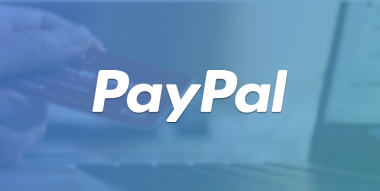

Choose the PayPal solution you want to use. Find the PayPal section and expand it to access the available PayPal solutions. Under the Sales tab, click on Payment Methods. >setMethodTitle('') // Output PayPal mark, omit title Follow these steps to activate and configure PayPal in your Magento 2 admin panel: Log in to your Magento 2 admin panel. Mage::helper('paypal')->_('You will be redirected to the PayPal website when you place an order.') $this->setTemplate('paypal/payment/redirect.phtml')
#Magento paypal logo code
known issue: code above will render only static mark image >setPaymentAcceptanceMarkSrc($this->_config->getPaymentMarkImageUrl($locale->getLocaleCode())) >setPaymentAcceptanceMarkHref($this->_config->getPaymentMarkWhatIsPaypalUrl($locale)) Step 4: Select the data you want to send from one app to the other. Step 3: Choose a resulting action from the other app.

$mark->setTemplate('paypal/payment/mark.phtml') Step 2: Pick one of the apps as a trigger, which will kick off your automation.
#Magento paypal logo how to
$mark = Mage::getConfig()->getBlockClassName('core/template') How to add PayPal logo in footer of customer account page (s) By default, Magento includes PayPal logo on all pages, except for Customer Account pages: Using FTP client and/or Hosting Cpanel filemanager, open app\design\frontend\default\XXX\layout\paypal.xml file. $this->_config = Mage::getModel('paypal/config')->setMethod($this->getMethodCode())

I copied the block app\code\core\Mage\Paypal\Block\Standard\Form.php to my local ( app\code\local\.) and changed protected function _construct() Instead of changing the mark.phtml file, I prerer to avoid displaying that file. But the above is the first, quick fix I found that works. Also, using the method that gets the PayPal title set in the configuration setting. The ideal solution would be to find the file that creates the label in the first place and make the change there. Optionally, copy that file to app/design/frontend/default/yourtemplatedir/template/mark.phtml if you don't want your change to be overridden in the next upgrade. GetPaymentAcceptanceMarkHref()?>" onclick="javascript:window.open('getPaymentAcceptanceMarkHref()?>','olcwhatispaypal','toolbar=no, location=no, directories=no, status=no, menubar=no, scrollbars=yes, resizable=yes, ,left=0, top=0, width=400, height=350') return false ">_('What is PayPal?') ?> I edited this file, simply adding a text label before the PayPal image: Ĭredit Card / PayPal escapeHtml($this->getPaymentAcceptanceMarkSrc())?>" alt="_('Acceptance Mark') ?>" class="v-middle" /> Go to app/design/frontend/base/default/template/mark.phtml. Once you completed your payment testing, please be sure to fill the configuration with your live Paypal information.Although this isn't the ideal answer, here's the quick fix I used to manually add in the label. You can now proceed to the frontend and start testing the payment cycle.

Please take note that we are using the Magento version 1.8.1 for this tutorial. We will not cover the sign up tutorial and we assume you already have this account ready before continuing reading the steps below. You can sign up for a Sandbox account at if you do not have an account. The Sandbox account works exactly like the live account, except the actual payment will not be processed. Paypal allows user to test their solution by using the Sandbox account. In this tutorial, we are going to show you on how to setup the Paypal for your testing. Or, perhaps to test for the order fulfillment, invoice printout and so on.
#Magento paypal logo pro
Besides, you may also want to verify if the FraudLabs Pro validation rules detect the fraud correctly. For example, you need test your payment process before publishing your online store live. There are many reasons that you need setup a payment test account on your Magento platform.


 0 kommentar(er)
0 kommentar(er)
